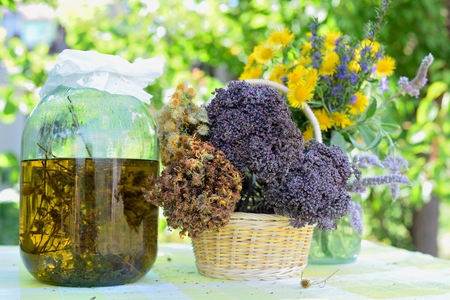Understanding Slugs and Snails in the UK Garden
For gardeners across the UK, slugs and snails are among the most persistent and troublesome pests. The damp climate and lush vegetation of British gardens create ideal conditions for these gastropods to thrive. The most common species encountered include the grey field slug (Deroceras reticulatum), the large black slug (Arion ater), and the garden snail (Cornu aspersum). Each species presents unique challenges due to variations in feeding habits, activity periods, and preferred habitats. Slugs and snails primarily feed on tender leaves, seedlings, fruit, and young shoots, often leaving behind distinctive slime trails and irregular holes in foliage. Their nocturnal activity makes early morning or late evening damage particularly noticeable. In addition to ornamental plants, they can cause significant losses in vegetable plots—devouring lettuces, brassicas, strawberries, and other staple crops. This not only impacts crop yield but also disrupts the ecological balance of your garden by giving an unfair advantage to more resilient or less palatable species. Understanding which types of slugs and snails are present in your garden is a vital first step towards managing their populations effectively. By recognising their habits and the specific threats they pose to local plants, UK gardeners can tailor homemade deterrent strategies that address both environmental sustainability and practical efficacy.
Natural Materials Readily Available in the UK
When it comes to crafting homemade slug and snail deterrents, British gardeners can turn to a variety of natural materials and everyday household items. Many of these are not only cost-effective but also environmentally friendly, making them ideal for anyone looking to protect their garden without resorting to harsh chemicals. Below is an overview of some common materials found in UK homes and gardens, along with their potential uses as deterrents.
Common Household and Garden Items
Several items typically found around British households can be repurposed into effective barriers or repellents. These materials are easy to source locally and often require minimal preparation.
| Material | Source | Deterrent Application |
|---|---|---|
| Eggshells | Kitchen waste | Crumble and scatter around plants to create a rough surface that slugs and snails avoid |
| Coffee Grounds | Used coffee from home or cafés | Spread in a thin layer on soil; caffeine acts as a mild irritant for slugs and snails |
| Grit/Sand | Garden supply shops or collected from paths | Create barriers around plant bases to deter soft-bodied pests |
| Copper Tape/Coins | Pennies or copper tape from DIY stores | Wrap around pots or raised beds; copper creates a mild electric charge that repels pests |
| Wool Pellets | Sourced from garden centres or local farms | Scatter pellets at soil level; fibres form a scratchy barrier that slugs dislike crossing |
Sustainable Choices for Eco-Conscious Gardeners
Opting for natural deterrents aligns with sustainable gardening practices widely encouraged across the UK. Many of these materials are biodegradable, compostable, or reusable, reducing landfill waste while protecting your plants. By utilising what is already available in your home or garden, you minimise environmental impact and support the health of your local ecosystem.
Key Considerations When Selecting Materials
When choosing which deterrents to use, consider the type of plants you’re protecting, the severity of your slug and snail problem, and your garden’s unique conditions. It’s also wise to rotate methods periodically to maintain effectiveness and prevent pests from adapting.

3. Homemade Barriers and Physical Deterrents
When it comes to DIY slug and snail control, physical barriers are a tried-and-tested method for many UK gardeners. These barriers work by creating obstacles that slugs and snails find difficult or uncomfortable to cross, thus protecting your prized plants without the need for chemical solutions. Below, we’ll explore some of the most popular homemade barriers—including crushed eggshells, copper tape, and gravel—and consider how effective they are in typical British weather conditions.
Crushed Eggshells: Natural Yet Limited
Crushed eggshells have long been touted as an eco-friendly deterrent. The theory is that the sharp edges irritate and potentially injure soft-bodied pests like slugs and snails. Simply scatter a generous ring of thoroughly dried and crushed shells around the base of vulnerable plants. However, in the UK’s often damp climate, eggshells can quickly lose their abrasive quality as they soften with rain or morning dew. While they may offer some deterrence during drier spells, their effectiveness is limited in consistently wet conditions.
Copper Tape: A Reliable Modern Solution
Copper tape is a highly regarded option among British gardeners due to its unique mechanism: when slugs or snails attempt to cross the copper, it reacts with their slime to produce a mild electric charge, which repels them. Affix adhesive copper tape around pots, raised beds, or greenhouse staging for a long-lasting barrier. Unlike organic materials, copper tape stands up well against the UK’s variable weather—remaining effective through rain and moisture. For best results, ensure the tape forms a continuous band with no gaps where pests might bypass the barrier.
Gravel and Grit: Simple but Weather-Dependent
A coarse layer of horticultural gravel or sharp grit sprinkled around plant bases can make movement uncomfortable for slugs and snails. This method is particularly suited for ornamental borders or alpine troughs common in British gardens. However, its effectiveness can diminish if heavy rainfall causes the gravel to settle into the soil or become embedded in mud, reducing the barrier’s sharpness and integrity. Regular replenishment and ensuring good drainage will help maintain its deterrent properties throughout the wetter months.
Considerations for UK Gardeners
While all these homemade barriers can play a role in integrated pest management, their success largely depends on local weather patterns and garden layout. In typically wet regions of the UK, more robust options like copper tape tend to outperform organic barriers such as eggshells or gravel. For best results, combine several methods tailored to your specific garden environment and remember that regular maintenance is key to sustaining their effectiveness throughout the growing season.
Natural Repellents: Recipes and Application Tips
When it comes to deterring slugs and snails in your UK garden, natural repellents made from common British-sourced ingredients are both effective and environmentally friendly. Below, we present step-by-step instructions for crafting homemade solutions such as garlic spray and coffee ground barriers, along with practical tips for their application.
Step-by-Step Instructions for Natural Slug & Snail Repellents
1. Garlic Spray
Ingredients:
- 2-3 large British garlic bulbs
- 1 litre water
- A saucepan and sieve
- Spray bottle
Method:
- Peel and crush the garlic bulbs.
- Add the crushed garlic to a saucepan with 1 litre of water.
- Bring to the boil, then simmer for 15 minutes.
- Allow to cool, then strain the liquid into a jug.
- Pour the strained liquid into a spray bottle.
Application Tip:
Spray directly onto soil and around plant bases in the evening. Reapply after heavy rain for continued protection.
2. Coffee Grounds Barrier
Ingredients:
- Used coffee grounds (from your cafetiere or local café)
Method:
- Allow used coffee grounds to dry out completely.
- Sprinkle a thin, even layer around vulnerable plants, forming a barrier.
Application Tip:
Coffee grounds not only deter slugs and snails but also add organic matter to the soil. Refresh the barrier after rainfall or watering.
Comparison Table: Natural Ingredients & Their Benefits
| Ingredient | Main Benefit | Sourcing Tip (UK) |
|---|---|---|
| Garlic | Pungent smell repels slugs & snails | Easily found in supermarkets or grown at home |
| Coffee Grounds | Abrasive texture deters movement | Collect from home use or local cafés |
| Crushed Eggshells | Cuts soft bodies of pests, acts as barrier | Save eggshells from kitchen waste |
Troubleshooting & Local Insights
If you notice slugs returning after rainfall, increase application frequency. For best results, combine several methods—garlic spray for foliage and coffee grounds or eggshells as ground barriers. These approaches align with sustainable British gardening practices and minimise environmental impact.
5. Innovative Garden Designs to Deter Slugs and Snails
Adopting clever garden design strategies is a proactive way for UK gardeners to minimise slug and snail infestations without relying on chemicals. Thoughtful structuring, selective planting, and strategic layout can all serve as effective deterrents while enhancing your garden’s visual appeal.
Optimising Garden Structure
Raised beds are increasingly popular across the UK for their drainage benefits and their natural ability to deter slugs and snails. Constructing beds with solid timber or brick edges creates physical barriers, making it more challenging for pests to reach your plants. Incorporating gravel or sharp sand paths between beds not only improves accessibility but also acts as an abrasive surface that slugs and snails dislike crossing.
Smart Plant Selection
Certain plant varieties are less attractive to slugs and snails or are even naturally resistant. In British gardens, consider incorporating aromatic herbs such as rosemary, thyme, lavender, and sage around susceptible plants; these provide both pest resistance and culinary value. Hardy plants like ferns, hellebores, foxgloves, and geraniums (cranesbill) are also less prone to damage, making them excellent choices for borders or feature areas.
Strategic Layout Techniques
Interplanting—mixing vulnerable species with tough or deterrent varieties—is a widely used UK technique to confuse pests and reduce widespread damage. Creating dense planting schemes minimises bare soil where slugs often lay eggs and hide during the day. Additionally, placing sacrificial plants such as lettuce or marigolds at the garden’s perimeter can lure pests away from prized specimens.
Additional Tips for a Pest-Resistant Layout
- Encourage wildlife by adding log piles or hedgehog houses; natural predators like birds, frogs, and hedgehogs thrive in well-designed British gardens and help keep pest numbers in check.
- Install vertical gardening features—wall planters or trellises lift vulnerable crops above ground level and out of easy reach for crawling pests.
- Regularly rotate crops to prevent pest populations from establishing in one area year after year.
By integrating these structural and design elements into your UK garden, you can create an environment that is both beautiful and naturally resilient against slugs and snails—all while supporting local biodiversity.
6. Safety, Sustainability, and Eco-friendly Practices
When crafting your own homemade slug and snail deterrents, it is essential to prioritise safety and sustainability to protect not only your garden but also pets, wildlife, and the broader UK environment. Below, we provide practical guidance for ensuring your DIY solutions are effective yet responsible.
Considerations for Pet and Wildlife Safety
Many household substances can pose unintended risks to pets such as dogs and cats, as well as beneficial garden visitors like hedgehogs, birds, and frogs. Avoid using toxic chemicals or ingredients like salt and coffee grounds in areas accessible to animals, as ingestion can be harmful. Instead, opt for physical barriers—such as copper tape or crushed eggshells—which are generally harmless to non-target species.
Protecting the Wider Environment
Homemade remedies should never compromise the natural balance of your garden ecosystem. Ingredients that leach into soil or water sources may disrupt local flora and fauna. When deploying any deterrent, ensure that it does not enter drains or streams, particularly if you live near sensitive habitats or conservation areas common throughout the UK countryside.
Sustainable Sourcing of Materials
Choose locally available, biodegradable materials wherever possible. For example, reclaimed copper from old household items or naturally discarded eggshells minimise environmental impact while supporting a circular approach to resource use. This aligns with the UK’s growing emphasis on sustainable living and gardening practices.
Eco-friendly Application Techniques
Apply slug and snail deterrents selectively rather than blanket-covering your entire plot. Target vulnerable plants and avoid excessive use to reduce waste and prevent build-up in the soil. Rotate different methods seasonally to maintain effectiveness while reducing pressure on any single part of your garden ecosystem.
Compliance with Local Regulations
Certain substances may be restricted under UK environmental laws or local council guidelines. Before introducing new materials or methods, check recommendations from organisations such as the Royal Horticultural Society (RHS) or consult your local authority’s advice on wildlife-friendly gardening.
By following these guidelines, UK gardeners can enjoy productive gardens while upholding their responsibility towards pets, wildlife, and the environment—ensuring that homemade deterrents remain both safe and sustainable for years to come.


